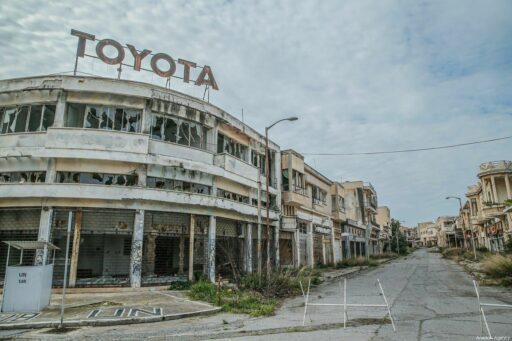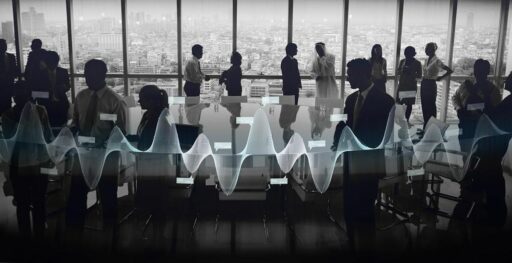Table of Contents
In a realm where the line between reality and the supernatural blurs, the concept of ghost data captivates the imagination. This article delves into the enigmatic world of ghost data, exploring the technology behind ghost detection, the historical significance of haunted locations, the chilling sounds associated with spirits, personal encounters with the paranormal, and the scientific approach to these unexplained phenomena. We seek to uncover the truth behind the ghostly mysteries that have both intrigued and terrified humanity for centuries.
Key Takeaways
- Ghost detection technology ranges from serious scientific tools to entertainment apps, with varying degrees of credibility and purpose.
- The history and lore of a location play a crucial role in its reputation as haunted, often influenced by cultural narratives and past events.
- Electronic Voice Phenomena (EVP) recordings are a controversial yet popular method for attempting to capture spirit communications.
- Personal testimonies of ghostly encounters are diverse and deeply personal, reflecting wider cultural attitudes towards the supernatural.
- Scientific investigations into paranormal activity aim to debunk myths and provide rational explanations, yet some phenomena remain unexplained.
The Ghost Detector Phenomenon

Understanding Ghost Detection Technology
In the fascinating world of ghost-hunting, gadgets play a vital role for those seeking spectral encounters. Devices like electromagnetic field (EMF) detectors are commonly used to sense fluctuations in the environment, which some believe indicate the presence of spirits.
The existence of supernatural entities is yet to be scientifically proven, and the accuracy of ghost detection technology is not guaranteed.
While some devices are designed with a scientific approach, others are created for entertainment purposes only. It’s crucial to distinguish between tools intended for serious paranormal investigation and those meant for amusement.
- EMF Detectors: Measure electromagnetic fluctuations.
- Ghost Radar: Claims to detect supernatural activities.
- Ghost Scanner: Captures and displays ghostly images.
- Eerie Audio Tools: Record and play back unexplained sounds.
Remember, the use of these technologies should always be approached with a healthy dose of skepticism.
Real Encounters vs. Entertainment Apps
In the realm of ghost hunting, distinguishing between genuine paranormal encounters and the thrills offered by entertainment apps can be challenging. Real encounters are often unstructured and unpredictable, whereas entertainment apps provide a controlled environment designed to simulate ghostly experiences.
- Real Encounters:
- Unpredictable and spontaneous
- Personal and subjective experiences
- Lack of control over the environment
- Entertainment Apps:
- Structured and scripted scenarios
- Replicable and consistent effects
- User control over the experience
While entertainment apps can offer a taste of the supernatural, they often lack the authenticity that comes with real encounters. These apps may use realistic imagery and haunting sound effects to create an immersive experience, but they fall short of capturing the true essence of a paranormal event.
It’s essential to approach ghost data with a critical eye, recognizing the difference between genuine phenomena and manufactured experiences designed for entertainment.
The Psychology Behind Ghost Detection
The allure of ghost detection apps lies not just in the thrill of the unknown, but also in the psychological mechanisms that drive us to seek out such experiences. Our belief in the supernatural is often reinforced by the technology we use, suggesting that these apps tap into deeper aspects of human psychology.
- Belief reinforcement: Apps provide a tangible way to interact with beliefs.
- Pattern recognition: Humans are wired to seek patterns, even in random data.
- Confirmation bias: We tend to favor information that confirms our existing beliefs.
The experience of detecting ghosts, therefore, is as much about the individual’s mindset as it is about the technology employed.
While these apps are explicitly designed for entertainment, as the disclaimer from a popular app states, they inadvertently play on psychological factors such as expectation and suggestibility. This can lead to a heightened sense of paranormal activity, even when none may exist.
Haunted Histories Unveiled

The Significance of Location in Ghost Lore
The allure of haunted locations is not merely a matter of eerie ambiance; it is deeply rooted in the stories and legends that pervade these places. Each site carries its own narrative, often passed down through generations, which can transform an ordinary location into a nexus of supernatural activity.
- Clinton Road, for example, is shrouded in tales of the Ghost Boy and a camouflaged hunter, whose stories are whispered among the locals and curious visitors alike.
- The Ghost Boy, a figure of local folklore, is said to toss coins back to those who dare to throw them into the water near the bridge.
- The hunter, another spectral inhabitant, adds to the chilling tapestry of Clinton Road’s haunted reputation.
These narratives, while not quantifiable by traditional statistics, are integral to the cultural significance of haunted sites. They are the threads that weave the rich tapestry of ghost lore, binding the past to the present, and the seen to the unseen.
The presence of ghosts and local folklore in literature, such as in the stories of ‘Here in the Night’, underscores the impact of real-life legends on creative works. The tales we tell about these haunted places are not just stories; they are a reflection of our collective fascination with the unknown and the unexplained.
Famous Haunted Sites and Their Stories
The allure of haunted sites is undeniable, with each location boasting its own unique and chilling narrative. These sites, steeped in history and mystery, often become the focal points for those seeking a brush with the paranormal.
- The Most Haunted Road in America: Legends of this road include a rich history of paranormal activity and unexplained phenomena, making it a magnet for ghost enthusiasts.
- Virginia’s Inns and Hotels: Virginia’s historic accommodations are rife with tales of spectral dancers and alien voices, as chronicled by author Susan Schwartz.
- Haunted History Features: Information on haunted locations often includes dates and details about the spirits, adding depth to the ghostly lore.
The fascination with these sites goes beyond mere ghost stories; they represent a tapestry of human experiences intertwined with the supernatural.
While some may dismiss these stories as mere fabrications, others find in them a deeper connection to our past and the enduring enigma of the afterlife.
Analyzing Historical Records for Paranormal Clues
The quest to unravel the enigma of paranormal activity often leads researchers to delve into historical records. These documents can be a treasure trove of information, providing insights into past events that may have been influenced by supernatural occurrences.
- Examining historical accounts allows researchers to identify patterns, commonalities, and variations in paranormal experiences.
- By analyzing these accounts, scholars can form hypotheses about the nature of these phenomena.
The meticulous study of historical records is crucial in separating fact from folklore, offering a more grounded perspective on paranormal claims.
While some records may offer compelling evidence, others require a discerning eye to sift through anecdotal tales and second-hand reports. The credibility of sources is paramount, and podcasts or documentaries that cite their sources and conduct thorough research are invaluable in this pursuit.
The Sound of Spirits

Eerie Audio: Separating Fact from Fiction
The allure of Electronic Voice Phenomena (EVP) has captivated paranormal enthusiasts and skeptics alike. These supposed communications from beyond are often presented as ghostly whispers captured on audio devices. But how many of these recordings are genuine, and how many are simply the result of audio misinterpretation or even deliberate manipulation?
When analyzing EVPs, it’s crucial to consider the source and context. For instance, a recording from a known haunted location might carry more weight than one from an unverified source. Here’s a quick checklist to help assess EVP recordings:
- Verify the location’s history and reported activity
- Check the recording equipment for possible malfunctions
- Analyze the audio for signs of tampering or external interference
- Consult with audio experts for a professional evaluation
While the search for proof of the paranormal is ongoing, it’s essential to approach each piece of evidence with a critical eye, ensuring that the desire for belief does not cloud our judgment.
The debate over EVPs often boils down to personal belief systems. Are we hearing the voices of the departed, or are we simply falling prey to our own expectations and the power of suggestion? The answer may not be clear-cut, but the quest for understanding continues to drive both believers and researchers in their pursuit of the truth.
Recording the Unheard: Techniques in EVP
Electronic Voice Phenomena (EVP) are sounds found on electronic recordings that are interpreted as spirit voices. These mysterious captures have fascinated paranormal enthusiasts and researchers alike. The quest to record these voices from the beyond employs various techniques, each with its own set of protocols and equipment.
- Digital Voice Recorders: The most common tool for capturing EVPs, offering clarity and ease of use.
- Analog Tape Recorders: Some purists believe analog devices are more susceptible to capturing authentic EVPs.
- Software Analysis: Audio software is used to analyze recordings, filtering out background noise and enhancing potential EVPs.
- Shielded Microphones: To prevent radio frequency interference, which can be mistaken for EVPs, shielded microphones are essential.
While skeptics may dismiss EVP as radio interference or auditory pareidolia, proponents argue that some recordings are too clear and relevant to be mere coincidences.
The interpretation of these sounds often requires a careful and critical ear, as it’s easy to fall into the trap of false positives. The community surrounding EVP is diverse, ranging from casual ghost hunters to serious parapsychologists, all driven by the desire to understand the unknown.
Interpreting the Language of the Dead
The quest to understand the messages from beyond has fascinated humans for centuries. Interpreting the language of the dead is not just about capturing voices on tape; it’s about deciphering the meaning behind the eerie whispers and sounds. Enthusiasts and researchers alike strive to connect these auditory phenomena with historical contexts and personal narratives.
- Historical Context: Aligning sounds with historical events or figures.
- Personal Narratives: Relating experiences to individual stories or emotions.
- Auditory Analysis: Filtering and analyzing sounds to isolate potential communications.
- Pattern Recognition: Identifying consistent themes or messages across recordings.
The challenge lies not only in the technical aspects of recording but also in the subjective interpretation of these sounds. Without a Rosetta Stone for the afterlife, each analysis is a blend of science, intuition, and sometimes, wishful thinking.
The field of Electronic Voice Phenomenon (EVP) has developed various methodologies to capture and analyze these sounds. However, the reliability of interpretations often comes into question. Skeptics argue that pareidolia, the tendency to perceive meaningful patterns in random data, plays a significant role in what people claim to hear.
Ghostly Encounters and Personal Testimonies

Sharing Paranormal Experiences
The sharing of ghostly encounters is a cornerstone of the paranormal community. Personal testimonies provide a human touch to the otherwise intangible and often inexplicable phenomena. These stories range from the spine-chilling to the simply unexplainable, and they serve as a bridge between the skeptics and believers.
- Email platforms and podcasts have become modern-day campfires for these tales.
- Listeners are invited to submit their experiences, fostering a sense of community and shared understanding.
- Each story, while unique, often echoes common themes of the unexplained that resonate with many.
The recounting of these experiences not only captivates but also offers a glimpse into the profound impact that the supernatural has on individuals. It’s a reminder that, regardless of one’s beliefs, the allure of the unknown is a powerful force.
The digital age has amplified the reach of these stories, allowing them to spread far and wide. Websites, social media, and online forums are rife with accounts of eerie occurrences, from haunted houses to otherworldly encounters. The collective narrative that emerges from these shared experiences continues to fuel the fire of curiosity and debate surrounding the existence of ghosts.
The Impact of Ghost Stories on Believers and Skeptics
The allure of ghost stories is undeniable, often weaving intricate narratives that tap into our deepest fears and curiosities. For believers, these tales reinforce the existence of an unseen world, providing a sense of continuity beyond our physical lives. Skeptics, on the other hand, may view these stories as mere folklore or psychological phenomena, attributing experiences to natural causes or the power of suggestion.
The dichotomy between belief and skepticism in ghost stories is not just a matter of personal conviction but also influences how individuals interpret ambiguous events.
While believers might see a flickering light as a spectral presence, skeptics could dismiss it as a simple electrical fault. This subjective interpretation extends to various forms of media, where the line between fact and fiction is often blurred. Podcasts and entertainment apps, for instance, play a significant role in shaping public perception of the paranormal.
- Believers often seek validation of their experiences and may turn to podcasts and stories that affirm their views.
- Skeptics prioritize empirical data and may favor content that debunks or rationalizes paranormal claims.
Understanding this impact is crucial for both sides to engage in meaningful dialogue about the nature of these phenomena and their place in our culture.
Cultural Differences in Ghost Perceptions
The perception of ghosts and the supernatural varies widely across cultures, often deeply rooted in historical beliefs and folklore. In some societies, ghosts are seen as benevolent spirits, offering guidance or protection, while in others, they are considered malevolent entities to be feared and avoided.
- Eastern cultures may emphasize ancestor worship and view spirits as a natural part of life after death.
- Western narratives often depict ghosts as restless souls with unfinished business.
- Indigenous traditions might integrate ghost stories into a broader understanding of nature and the cosmos.
The way we interpret ghostly encounters can reveal much about our societal values and fears.
Understanding these cultural nuances is crucial when analyzing ghost data. It’s not just about the presence of ghosts, but how different people react to and interpret these encounters. This can influence everything from the methods used in ghost detection to the types of stories that become popular in media and entertainment.
The Science of the Supernatural

Investigating the Unexplained: A Scientific Approach
The pursuit of understanding the paranormal has led to the formation of organizations such as the Association for the Scientific Study of Anomalous Phenomena (ASSAP), which aim to scrutinize the unexplained with a critical eye. These groups often consist of both scientists and laypeople, working together to apply rigorous methodologies to investigate claims of the supernatural.
- Methodical Documentation: Collecting detailed accounts of paranormal events.
- Controlled Experiments: Attempting to replicate phenomena under observed conditions.
- Data Analysis: Examining evidence using statistical and analytical tools.
- Peer Review: Subjecting findings to scrutiny by the scientific community.
The scientific approach to paranormal research is not about disproving the existence of ghosts, but rather about seeking to understand the phenomena through empirical evidence and logical reasoning.
While the scientific community remains largely skeptical of paranormal claims, it is the structured approach to investigation that provides a foundation for either validating or debunking such experiences. The process is meticulous, often involving the collection of data, hypothesis testing, and the search for alternative explanations.
Debunking Myths: When Science Meets Ghost Data
In the quest to understand the paranormal, science plays a crucial role in separating fact from folklore. Bold claims of ghostly encounters often lack the empirical evidence required to be taken seriously in the scientific community. Skepticism becomes a necessary tool when examining such claims, as they frequently stem from subjective experiences rather than objective data.
- Subjective Experiences: Personal anecdotes and feelings.
- Anecdotal Evidence: Stories without verifiable proof.
- Empirical Data: Measurable and observable information.
The allure of the unknown tempts many to believe in the supernatural, yet it is the rigor of scientific inquiry that brings clarity to the shadows.
Podcasts and media that delve into the paranormal can be a mixed bag. It’s essential to discern between those that provide well-researched information and those that are mere vessels for entertainment. A critical approach to evaluating such content includes looking for credible sources, expert interviews, and a solid foundation of research. Here’s a quick guide to help differentiate:
| Criteria | Credible Podcasts | Entertainment Podcasts |
|---|---|---|
| Sources | Cite sources | Rarely cite sources |
| Research | Conduct research | Focus on storytelling |
| Experts | Feature experts | Lack expert opinions |
By applying a scientific lens to ghost data, myths are debunked, and what remains is either a fascinating new discovery or a tale relegated to the realm of fiction.
Future Technologies in Paranormal Research
As the field of paranormal research advances, the integration of cutting-edge technologies is inevitable. Artificial intelligence (AI) and machine learning (ML) are poised to revolutionize the way we investigate the unexplained. These tools can analyze vast amounts of ghost data, identifying patterns and anomalies that might elude human researchers.
Emerging technologies also promise enhancements in sensory equipment. Advanced sensors could detect subtler energy fluctuations, while augmented reality (AR) might allow us to visualize spectral presences in real-time. The potential for these technologies to change the landscape of paranormal research is immense.
- AI and ML for pattern recognition
- Advanced sensors for energy detection
- AR for real-time visualization
The future of paranormal research is not just about new gadgets; it’s about the innovative application of these technologies to deepen our understanding of the unknown.
Conclusion: Embracing the Enigma of the Supernatural
As we journey through the shadowy corridors of the unknown, we find ourselves confronted with tales and technologies that challenge our understanding of reality. From the eerie echoes of ghostly apparitions to the advanced gadgets of ghost hunters, the world of ghost data presents a realm where the line between the tangible and the ethereal blurs. While the existence of supernatural entities remains shrouded in mystery and skepticism, the allure of the paranormal continues to captivate our curiosity. Whether through podcasts that delve into chilling encounters or apps that offer a playful glimpse into ghost detection, our fascination with the otherworldly speaks to a deeper yearning to explore the unexplained. As we close this chapter, let us acknowledge that the search for answers may be endless, but it is the thrill of the quest itself that keeps the spirit of discovery alive.
Frequently Asked Questions
What is ghost detection technology?
Ghost detection technology refers to devices and apps designed to sense and record paranormal activity or entities, often using sensors to detect unusual electromagnetic fields, temperatures, or sounds that some believe indicate the presence of ghosts.
Can ghost detector apps really find ghosts?
Most ghost detector apps are designed for entertainment purposes and their accuracy is not scientifically proven. They often use random data or environmental cues to simulate ghost detection, so their results should be taken with skepticism.
What are some famous haunted sites?
Famous haunted sites include the Tower of London, the Stanley Hotel, and the Eastern State Penitentiary. Each location has a rich history and numerous reports of paranormal activity.
What is EVP in ghost hunting?
EVP, or Electronic Voice Phenomena, refers to the recording of sounds believed to be voices of spirits or ghosts, often captured on audio recording devices during paranormal investigations.
How do cultural differences affect perceptions of ghosts?
Cultural differences greatly influence how people perceive ghosts, with various traditions and beliefs shaping what entities are considered ghosts, how they are described, and the ways in which they interact with the living.
Is there a scientific approach to investigating the supernatural?
Yes, some researchers apply scientific methods to investigate the supernatural, using controlled experiments, objective data collection, and critical analysis to study and debunk or validate paranormal claims.





